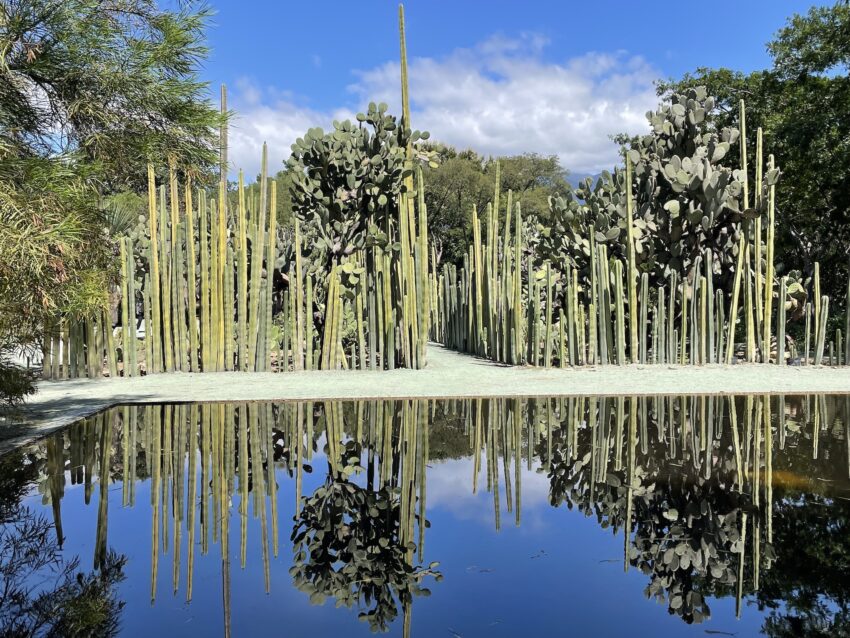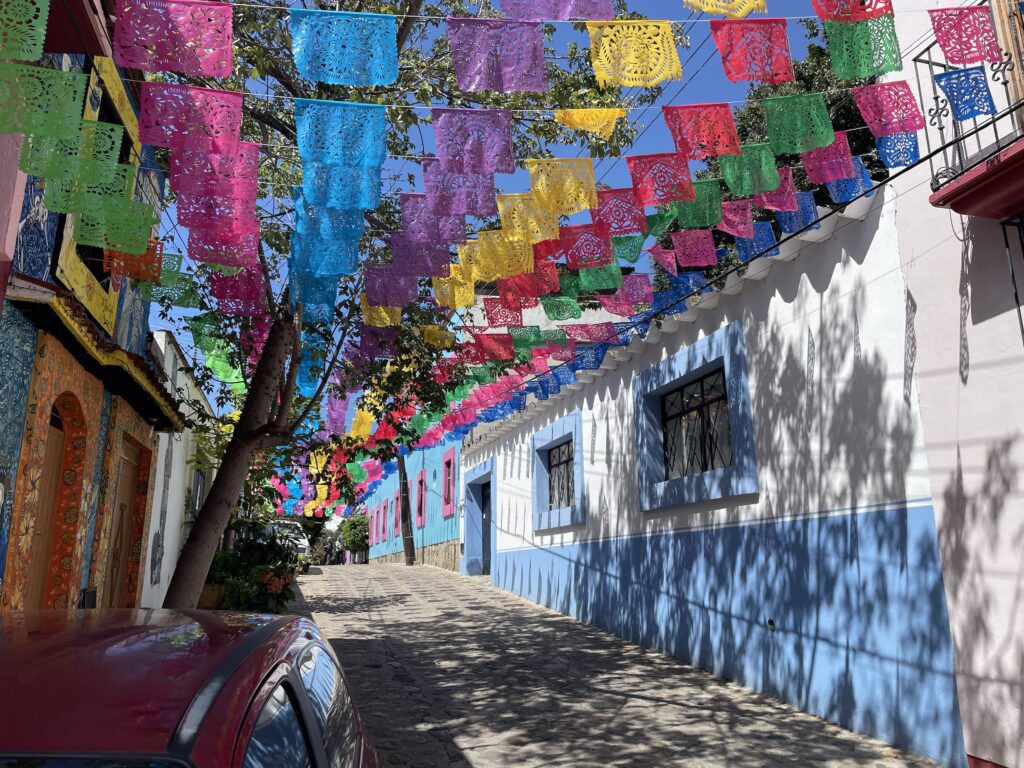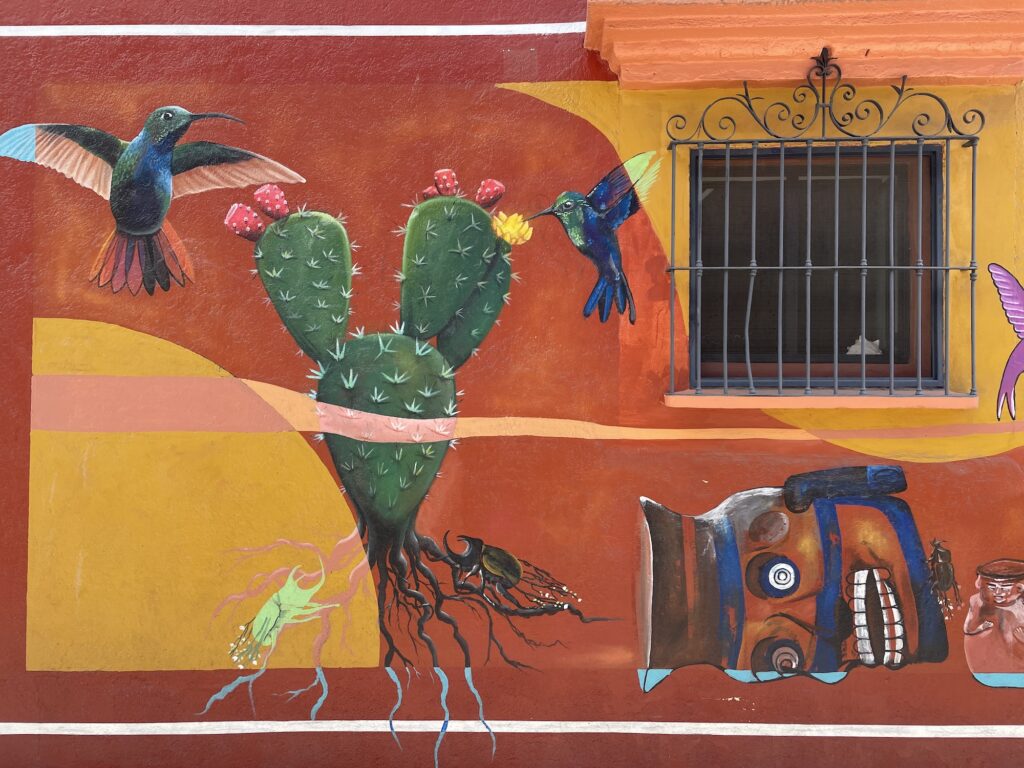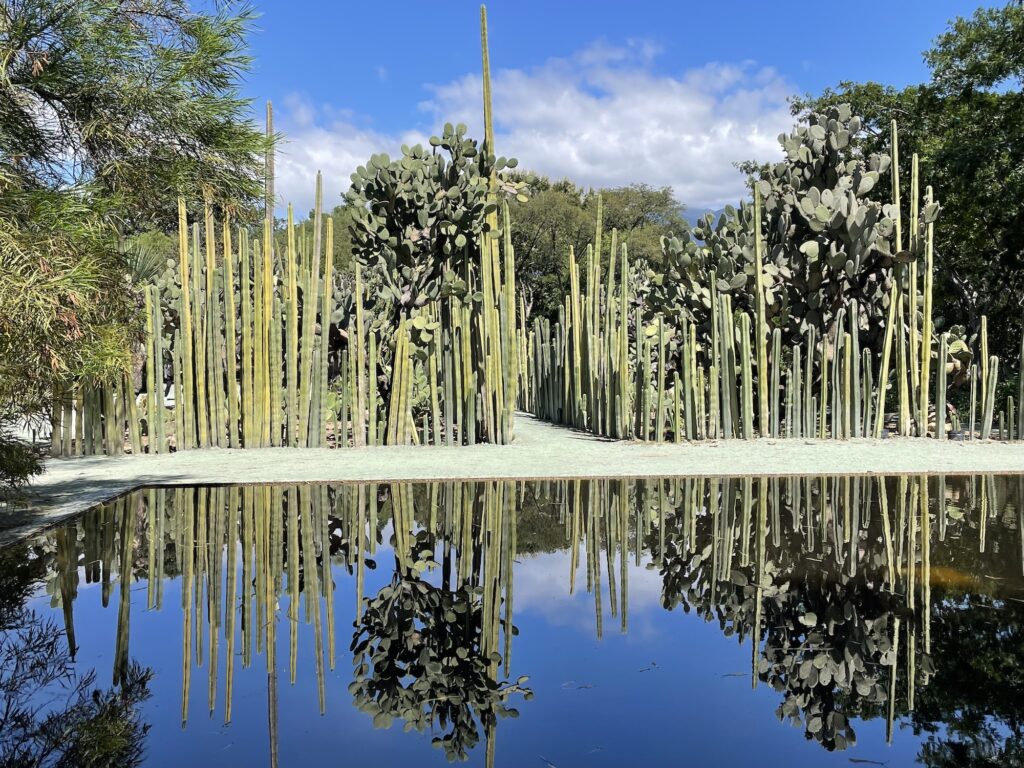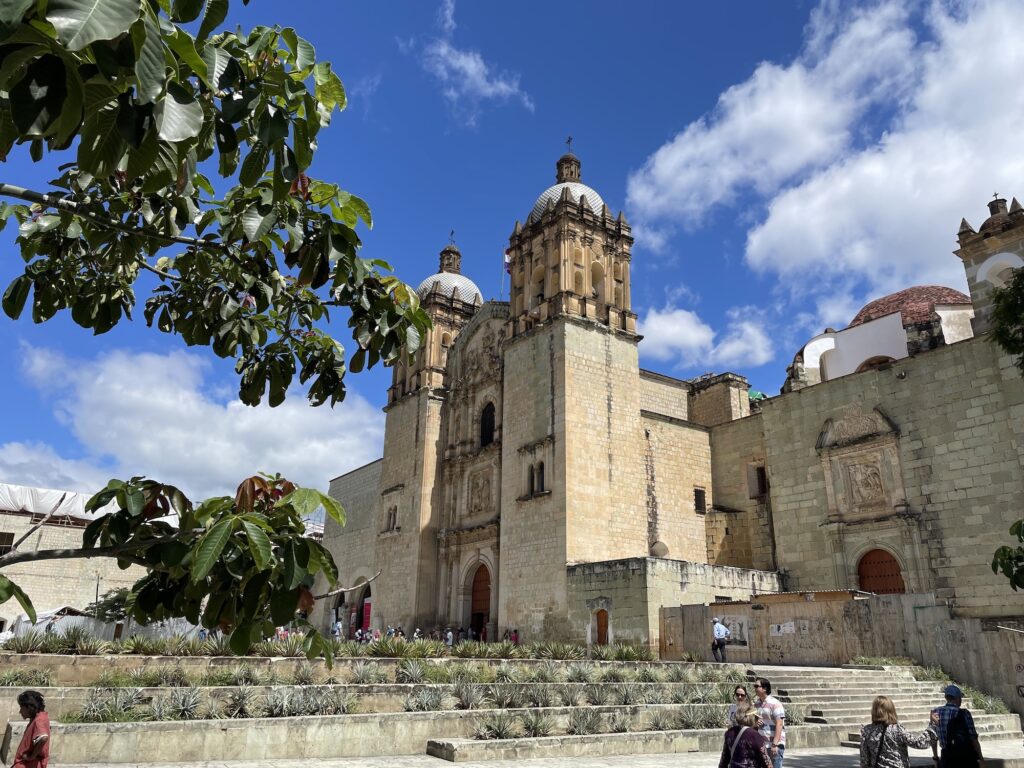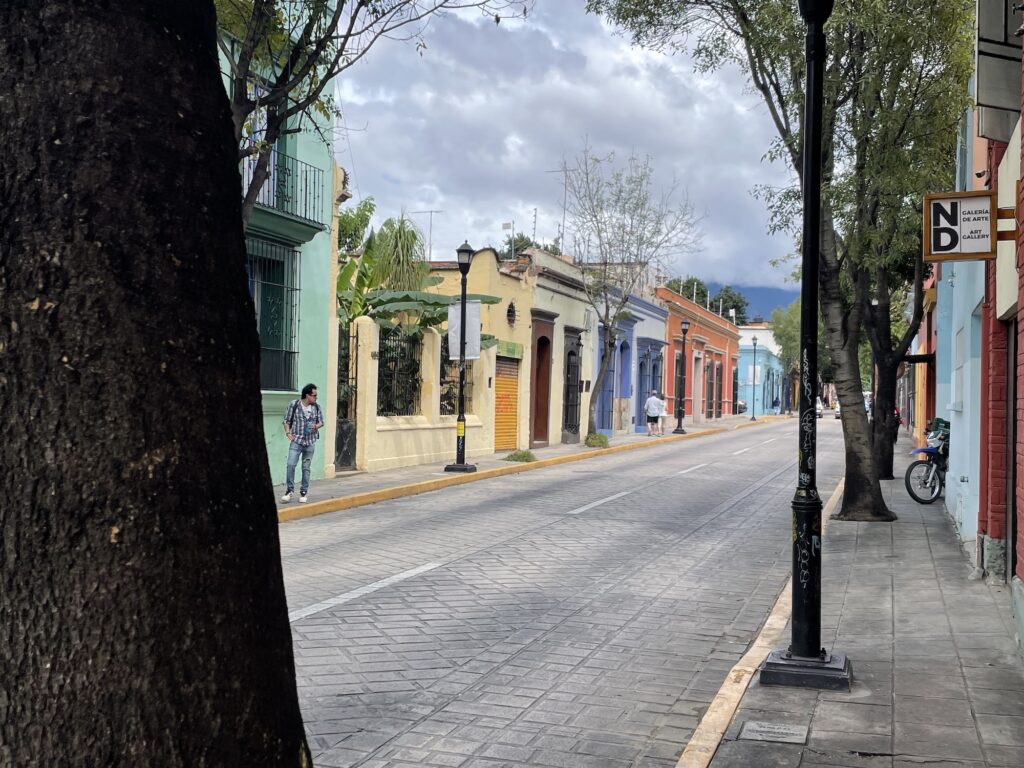Oaxaca must rank as one of the most colourful cities on earth, offering rewards with every step. Its buildings are painted a multitude of glorious shades and it has some of the best street art in Mexico.
Famous for its Day of the Dead celebrations at the beginning of November, in the weeks leading up to the event the streets are draped with colourful decorations and flowers. So our visit in October came at just the right time. Great weather made the city sing even louder.
Oaxaca was the final stop on our Mexican adventure and, after the heat and humidity of Merida, brought with it much more acceptable temperatures that made walking around it’s attractive centre a real pleasure. Surrounded by majestic and verdant hills, in which the Zapotec and Mextic people lived in centuries past, it couldn’t be more different to the flat plains of the Yucatán.
We settled into our pleasant hotel, the Nana Vida, which lies on the border of the historic centre and the Barrio de Jalatlaco, one of the most historic of the city’s districts and one rich in colonial architecture. Jalatlaco is also one of the best places to view street art and the Day of the Dead decorations. Skeletons and other Day of the Dead imagery featured heavily, and themes such as protest, nature and spirituality were also evident. Walking its quiet, largely pedestrianised back streets, we were bathed in rich, earthy colours and witness to some incredible talent. We located more street art in the Xochimilco barrio, notably in and around Jose Lopez Alavez.
Creativity doesn’t just extend to the street art in Oaxaca. Judging by the vendors who line the streets (as they do across Mexico), the locals are seriously talented people when it comes to design across the board, whether that be jewellery, rugs, clothing, pottery, linocuts or other visual arts. There aren’t many folk selling the Made in China tat and cheapo souvenirs we usually come across on market stalls in cities around the globe. We came home with a particularly impressive linocut of cacti by an artist with so many great works on sale that it was difficult to plump for just the one.
Cacti feature prominently in one of the city’s best attractions, the Jardín Etnobotánico de Oaxaca. Created in the former monastery garden of the neighbouring Templo de Santo Domingo de Guzmán, it showcases plants that were important to indigenous communities for food, as medicine and in cultural practices. The garden can only be visited on guided tours, because of previous inexplicable cases of vandalism, which would be all well and good were the talks available in English but this wasn’t the case during our stay. So we had to endure four or five prolonged and rather tedious stops around the garden while no doubt fantastic tales were told of plants, people and history. Some labels and information boards in different languages would’ve helped. Still, as well as cacti there were agaves, various grains, some flowering plants I recognised from growing back home such as violets and cosmos, plenty of trees for shade and fruit and, not surprisingly, maize.
The Templo de Santo Domingo de Guzmán, which is no longer a monastery, is a fine 16th century building that now houses a museum that takes a trot through the history of the region, with significant artefacts from the pre-Columbian era. Confusingly for those of us wanting to understand the story, some rooms had information available in English but in others it was all Spanish. Fortunately the section devoted to Tomb 7 of the nearby Zapotec remains of Monte Albán was bilingual so we were able to grasp the importance of one of the most significant burial sites yet found in Mesoamerica. The artefacts include exquisite works of art and jewellery, not least a skull decorated with turquoise tiles.
The present-day religious centre of Oaxaca is the cathedral in the main square, the Plaza de la Constitucion. Heaving with people and with towering trees that provide much-needed shade, the square is also the civic heart of the city. Shopping streets lead away from it and just to the south is the atmospheric Mercado Benito Juárez, crammed to the point of bursting with stalls selling everything from chickens to Day of the Dead costumes. The square attracts as many hawkers as it does pedestrians. We stopped in one or two of the distinctly average cafes and endured the sound of multiple buskers playing different tunes on a variety of different instruments, the whole of which sounded like an out-of-tune orchestra featuring the least talented musicians on the planet. It was a bit of a relief to get away.
It was unfortunate that our stay in Oaxaca was marked as much by illness as discovery, for it meant that my appreciation of the city’s culinary tradition was somewhat dented. A great shame, as there were some pretty impressive restaurants, not least Casa Oaxaca, with its terrace overlooking the Templo de Santo Domingo. By our last night I was in dire need of stodge and we found Boulenc, a great bakery with sourdough pizzas, delicious-looking pastries and craft beer.
The following day, bags were packed and we took the short flight to Mexico City, the start of our long journey home.

